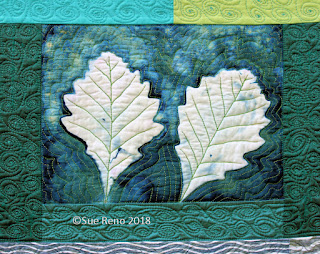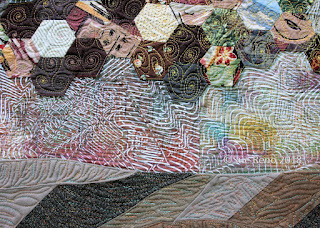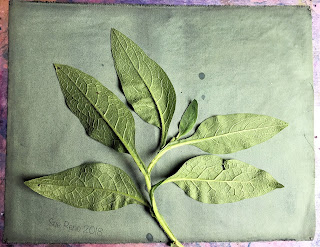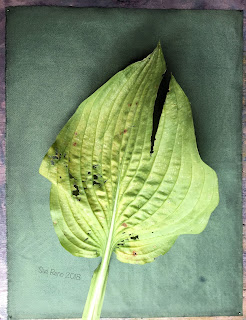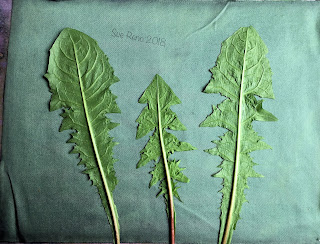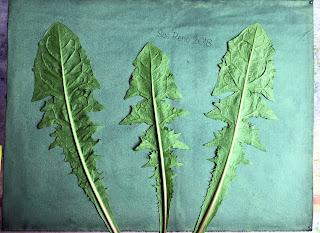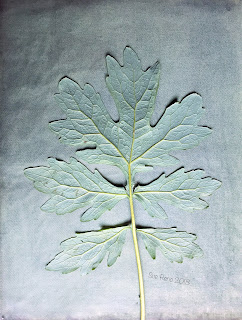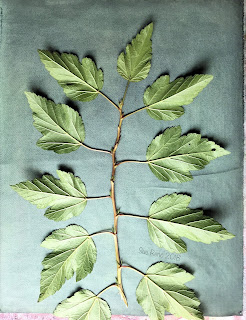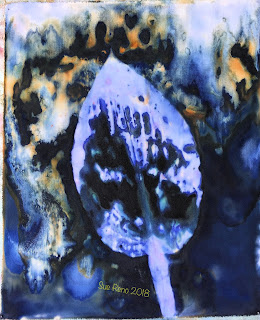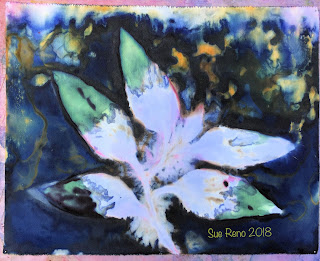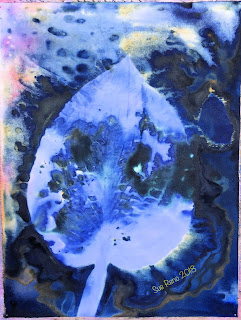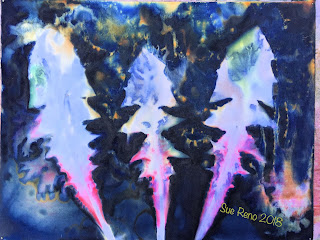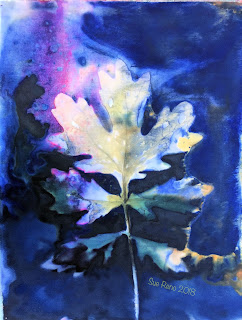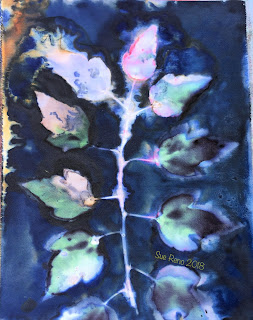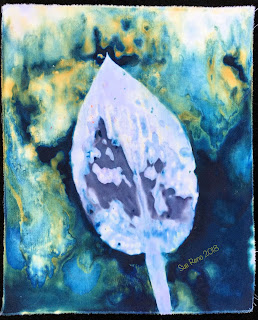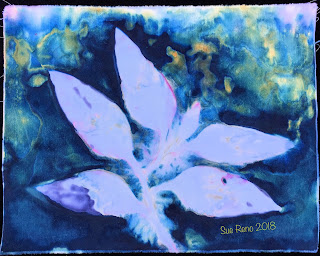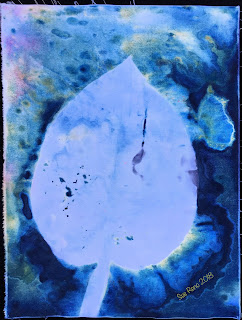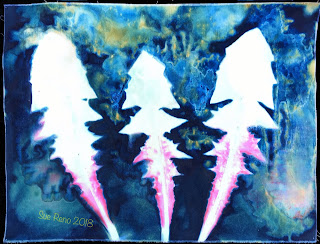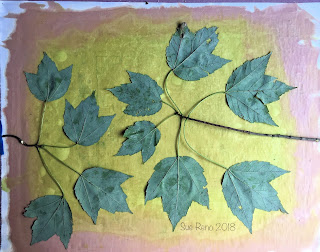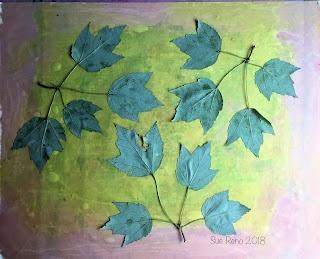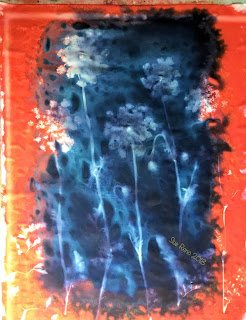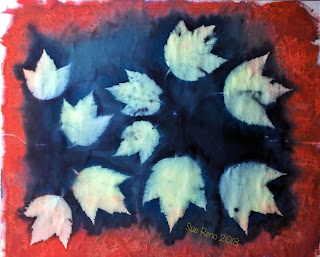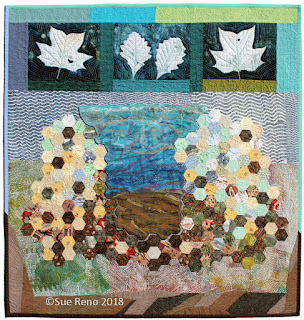 |
| The River Ran Deep |
I am pleased and excited to share my newest work, The River Ran Deep. It's part of my ongoing series on the Susquehanna River. I was asked to join four other artists--Rob Evans, John David Wissler, Mark Workman, and Ann DeLaurentis-- to contribute work for the "Dine On Harvest Moon Gala" auction for the Lancaster County Conservancy I was happy to make this specifically for the cause. I and my husband are long time supporters of the Conservancy, and benefit greatly from the trail system they have put together and maintain. Many of my works about the river have been inspired by hikes taken on Conservancy properties.
For the top portion of this work, I made wet cyanotype prints of leaves from native trees, tulip poplars and chestnut oaks. If you've been following my work, you've seen that wet cyanotype printmaking is an ongoing obsession. It's delightfully unpredictable, and dependent on the time of year and the weather conditions. Making these prints connects me to the natural world and my micro-environment in a direct way.
For the imagery representing the river, I turned to the same needlefelting technique I've used for In Dreams I Drifted Away and In Dreams I Flew Over the River, among others. Layers of wool and silk fibers are integrated into a wool base, providing great detail, movement, and texture.
The further surround is made from fabric that I mono-printed to in waves and interlocking geometric/geological patterns. At the base, the whole work is grounded by thick, earthy woolens. The work is 44" high by 42" wide.
I've lived near the beautiful Susquehanna most of my life and have observed it over the years cycling through droughts and flood stages. This summer I've watched as potent storms and historically heavy rainfalls have made it run high and run deep. I'm here to chronicle this and future conditions.
You can contact the Conservancy for information about the auction and advance bidding: https://www.lancasterconservancy.org/contact/
